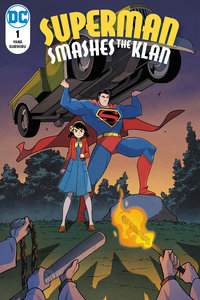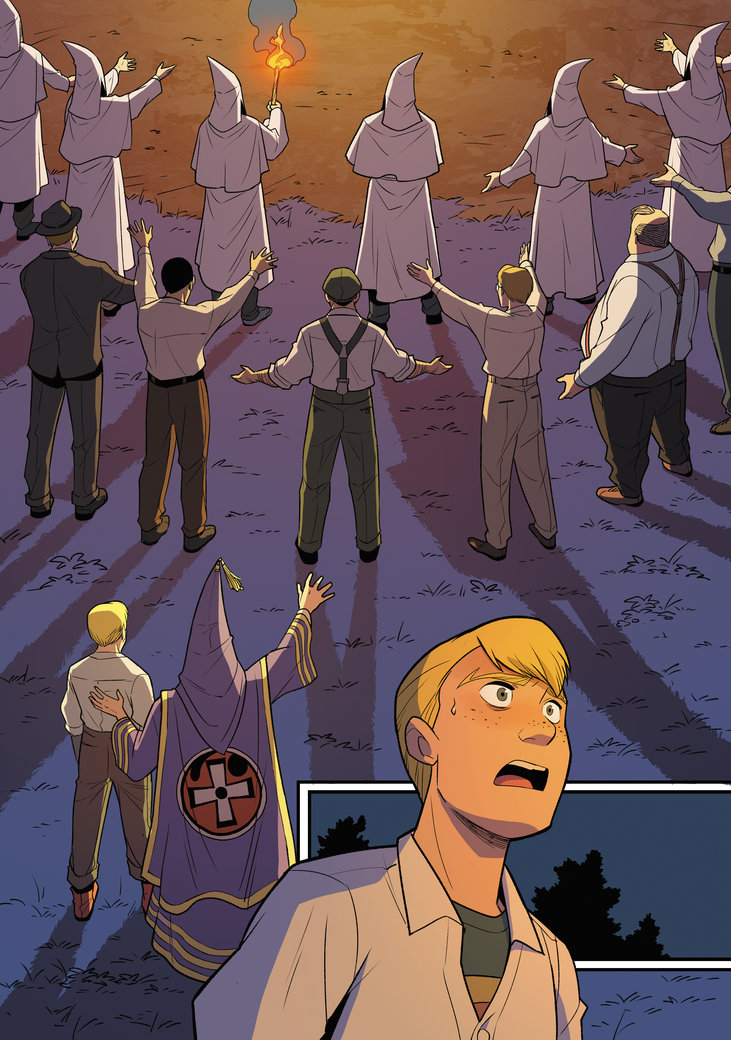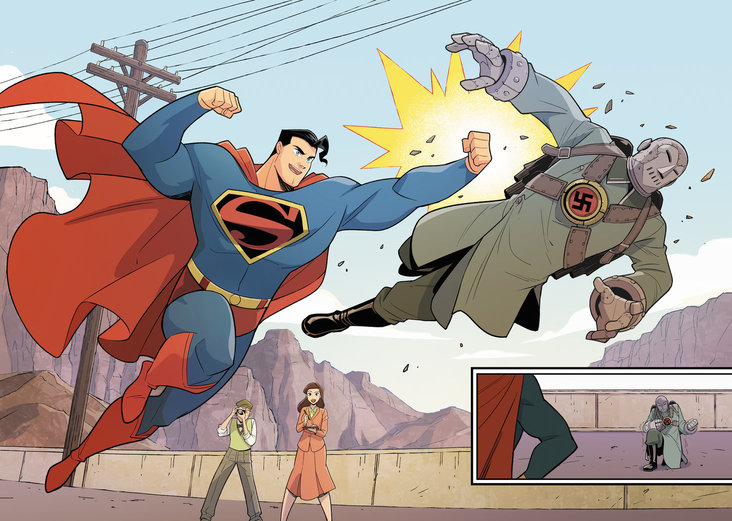Review: SUPERMAN SMASHES THE KLAN #1

[Editor’s Note: This review may contain spoilers]
Writer: Gene Luen Yang
Art: Gurihiru
Letters: Janice Chiang
Reviewed by: Alex McDonald
Summary
Superman Smashes the Klan #1: Inspired by the 1940s Superman radio serial “Clan of the Fiery Cross,” Gene Luen Yang (American Born Chinese, Boxers and Saints, THE TERRIFICS, NEW SUPER-MAN) presents his personal retelling of the adventures of the Lee family as they team up with Superman to smash the Klan.
It’s 1946 and the Lee family have moved from Metropolis’ Chinatown to the centre of the bustling city. While Dr Lee is greeted warmly in his new position at the Metropolis Health Department, his two kids, Roberta and Tommy, are more excited about being closer to their famous hero, Superman! However, an evil is stirring in Metropolis: the Ku Klux Klan. When the Lee family awakens one night to find a burning cross on their lawn, they consider leaving town. With Superman still new to his powers can he help the Lee family as they face overt discrimination at the hands of the Klan of the Fiery Kross?

Positives
Gene Luen Yang has more than proved himself as a writer but with only one issue Superman Smashes the Klan could become a highlight of his career. Adapted from the 1940s radio serial, the story follows the Lee family as they move from Chinatown to the centre of Metropolis. The Lee’s are a mix of Chinese immigrants and first-generation Americans. Readers are given a more innocent look into racism by focussing on the children Tommy and Roberta.
For example, one of the standout features of this book is its portrayal of racism. On one hand you have the overt cross burning racism of the Klan. On the other, the more subtle use of language and attitude that is used to discriminate. This is shown perfectly in the way some kids use racial slurs like it is everyday speech. Similarly, after the cross-burning scene Inspector Henderson (a black man) arrives at the Lee’s house only for the father to ask them to leave as he doesn’t want any “more trouble.” By showing racism as engrained in society like this it humanises the characters in a way uncommon in comics.
Following from this the character of Chuck is a great example of the effects of racism. He’s in school with the Lee kids and plays the role of the class bully. Or rather, the racist guy. But we also learn his uncle is the Grand Scorpion for the Klan. Readers are given this to show how racism spreads. It’s unlikely Chuck was born with these views. He’s Superman’s “number one fan.” So, while he looks up to Truth, Justice and the American Way he also takes part in a cross-burning. Directly conflicting his childish love of Superman with his uncle’s views is a great way to showcase racism as a corrupting influence.
Artwork comes from Gurihiru, the Japanese artist team. The style matches the tone of the book wonderfully and rounds everything off with a nice childhood feel. It’s cartoonish enough that you feel like a child reading Superman for the first time again, but not so cartoonish that it feels irreverent.

Negatives
There is very little to criticise here. As a Japanese art team Gurihiru’s style is obviously very Japanese. For fans of American comics this may take getting used to. Characters have large manga eyes and their hair appears to come alive at times, especially Superman, whose signature curl is almost another character here. This is far from a negative but is something to be aware of going in.
A possible critique to be made is the apparent virtue of all the ‘good’ characters. As noted in the positives, the scene between Dr Lee and the black men following the cross-burning is a great example of subtle racism but it’s the only example featuring a protagonist. Now, it’s unlikely that DC would want their characters saying anything remotely controversial by today’s standards, but for 1946 everyone is certainly very progressive. It would have been nice to see this “racism engrained in society” theme shown through characters like Perry White and Jimmy Olsen too.
Verdict
This is a treat for comics fans. It has all the fun of a classic story and makes the reader feel like a kid again. Add on to that smart social commentary that blends into the narrative almost seamlessly and you have a fantastic Superman comic everyone should read.
